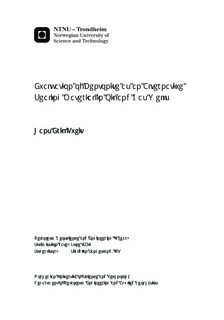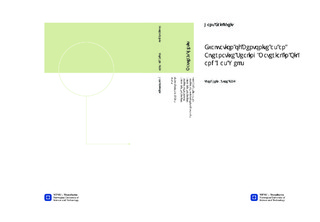| dc.description.abstract | A growing number of wells will have to be plugged and abandoned in the future. On the Norwegian continental shelf, 2000 wells will have to be abandoned from 2011-2040. The costs of plugging a well are high and can contribute with up to 25% of the total cost of the well. In this thesis bentonite was evaluated as an alternative sealing material to cement for plug and abandonment of wells. Bentonite shows superior sealing ability due to the fact that it will swell and expand during hydration compared to cement which has the tendency to shrink. A hydrated bentonite plug also has a lower permeability than cement, and it has the ability to reshape itself and heal any cracks which may occur during subsurface movements. A literature study was performed to review previous work, and tests using bentonite as a sealing material was conducted in the lab. In the lab experiments, 9 fullbore plugs and 6 annulus plugs of different lengths made of bentonite pellets were tested. In addition, 7 fullbore plugs and 5 annulus plugs made of dry powdered bentonite were tested. Fullbore plugs were tested in an 8,97cm ID plastic pipe while annulus plugs were tested between the same plastic pipe and a 5,00cm OD plastic pipe. The total length of the test pipe was 1m. In all the experiments, bentonite created a hydraulically solid plug, both for fullbore plugs and annulus plugs. The pressure needed to dislodge the plugs varied from 20kPa to 101kPa with plug lengths from 23cm to 91cm. The pressure was found to increase linearly with the length of the plug for both fullbore plugs and annulus plugs, whether bentonite pellets or dry powdered bentonite were used to create the plugs. This leads to the shear strength τ being independent of plug length. The shear strength τ between the hydrated plugs made of bentonite pellets and the plastic pipes was found to be 1,33 kPa for fullbore plugs and 1,02 kPa for annulus plugs. For plugs prepared by powdered bentonite the shear strength was found to be 1,40 kPa for fullbore plugs and 0,89 kPa for annulus plugs. The density of the hydrated bentonite pellets plugs was found to be 1,533 g/cm3. The expansion from dry volume of pellets to hydrated plug volume was in the range of 92%-120%. The dry density of the pellets before hydration was measured to 2,025 g/cm3. The density of plugs made of powdered bentonite was found to be 1,102 g/cm3. The expansion from dry volume of powdered bentonite to hydrated plug volume was in the range of 283-332%. The dry density of the powdered bentonite was measured to 1,09 g/cm3. Theory and experiments from soil plugs in driven piles predict that a relatively short sand plug can resist very large forces. By placing a suitable sand plug on top of a bentonite plug, the result could be a short total plug length which is impermeable due to bentonite and can resist large forces due to the sand plug. Plug height needed to achieve a plug capacity of 200 bar in a 5 ½” casing is 352m for bentonite pellets using the shear strength found for plastic pipes. By taking the increased roughness of a steel pipe into account the height needed is estimated to 89m. The same pressure rating can be achieved using a combination of a 2m long sand plug placed on top of a 10m long bentonite plug. Further work is suggested to be carried out on combining a bentonite plug with a sand plug located on top. Improved methods for placement of bentonite and sand in the wellbore should also be investigated. | nb_NO |

